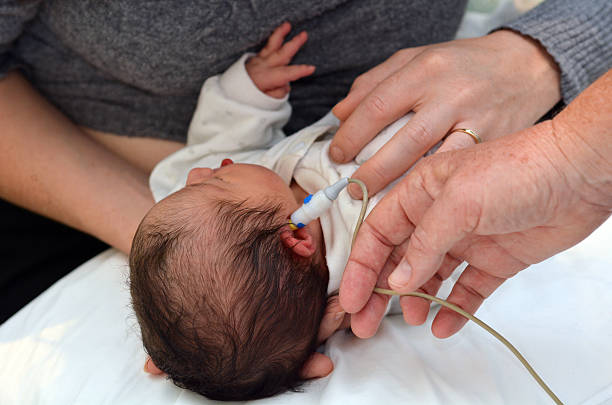Hearing screening for new born is a non-invasive test that helps identify hearing loss early in a child’s life. Early identification and intervention of hearing loss can greatly improve a child’s language development, academic success, and social skills.
There are two main types of hearing screening tests for new born: Otoacoustic Emissions (OAE) and Auditory Brainstem Response (ABR) tests. OAE test: During an OAE test, a small earphone is placed in the baby’s ear and sounds are played. A microphone is used to measure the inner ear’s response to the sounds. If there is no response or a weak response, it may indicate a hearing problem.
ABR test: During an ABR test, electrodes are placed on the baby’s head to measure the brain’s response to sounds. This test can help identify the level of hearing loss, if present. Both OAE and ABR tests are safe, quick, and painless. The screening can be done while the baby is sleeping or lying still. If a baby does not pass the initial screening test, a follow-up evaluation is recommended. This may include additional testing and referral to an audiologist or other hearing healthcare provider for further evaluation and treatment. In many countries, including the United States, new born hearing screening is mandatory, and hospitals offer it shortly after birth.
However, it’s important to confirm with your healthcare provider that your baby has received a hearing screening and to follow up with any recommended additional testing or evaluation.

